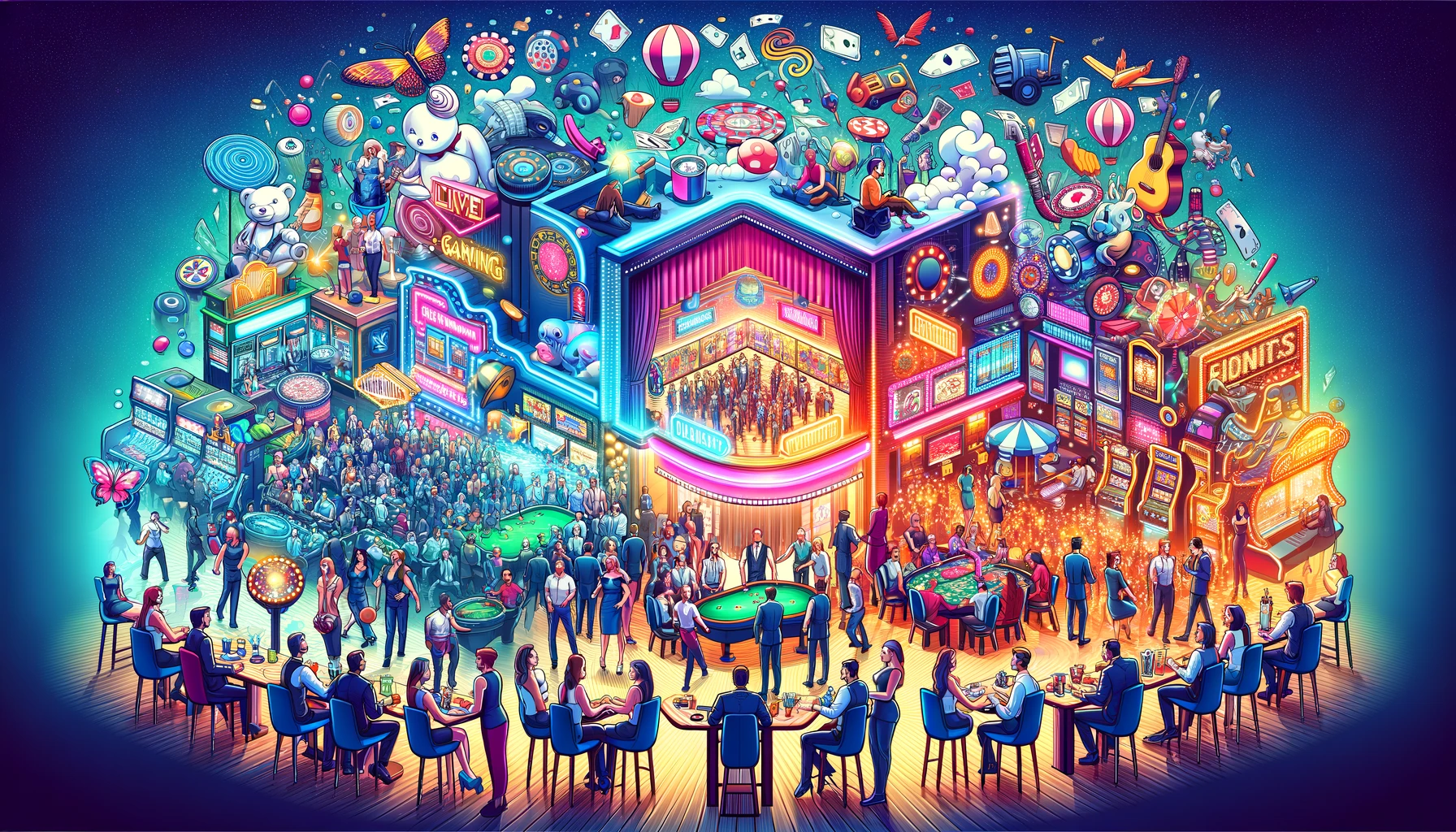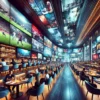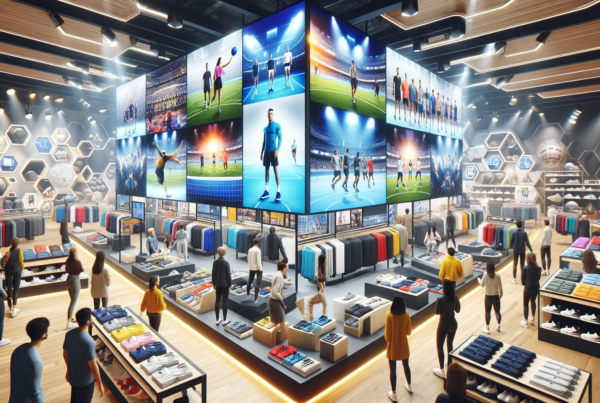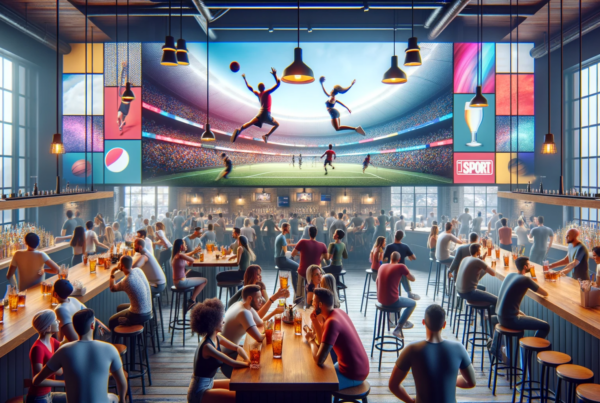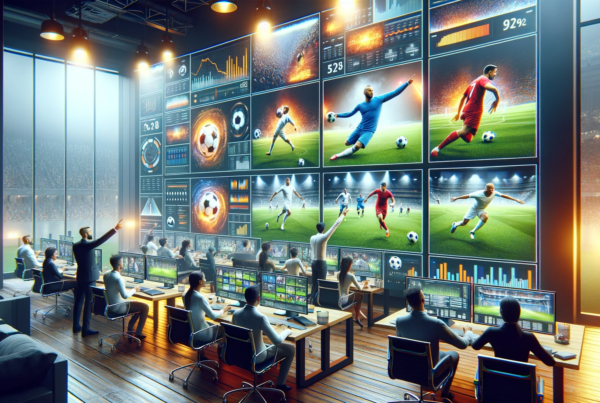Level Up: How On-Premise Entertainment Powers Success in the Gaming Industry
The gaming industry and in-premise entertainment have evolved into a symbiotic ecosystem, where the integration of entertainment solutions within gaming establishments not only enhances the player experience but also serves as a significant growth driver for the industry. This article delves into the myriad ways in which on-premise entertainment can amplify the success of gaming businesses, from casinos to arcade centers and beyond.
Today’s gaming landscape is fiercely competitive, with players seeking more than just the thrill of the game. They crave a holistic experience that combines leisure, excitement, and social interaction. This is where in-premise entertainment steps in, transforming gaming venues into multifaceted destinations that cater to a diverse audience. By offering a rich blend of gaming and entertainment, establishments can attract a broader demographic, encourage longer stays, and ultimately, increase their bottom line.
But what exactly constitutes in-premise entertainment, and how can it be effectively leveraged? From live shows and events to themed attractions and immersive experiences, the spectrum of possibilities is vast. This article will explore the strategic implementation of in-premise entertainment and its impact on customer engagement and loyalty. Furthermore, we will examine case studies and data-driven insights that underscore the value of entertainment in the gaming industry.
Entertainment as a Catalyst for Gaming Venues
In-premise entertainment is not a mere addition to gaming; it is a catalyst that can propel gaming venues to new heights. Entertainment offerings can vary widely, from live music and performances to dining experiences, sports viewing parties, and interactive exhibits. These attractions serve to create a dynamic environment that keeps patrons engaged and entertained beyond the gaming tables and machines.
For instance, a casino that hosts regular concerts and shows can appeal to non-gamers, who might be drawn to the venue for the entertainment alone. Once on the premises, they are more likely to explore the gaming options available, potentially converting into new customers. Additionally, for regular players, the presence of entertainment acts as a refreshing break from gaming, which can enhance their overall satisfaction and likelihood of return visits.
Entertainment also plays a vital role in differentiating a gaming establishment from its competitors. Unique and high-quality entertainment offerings can become a brand’s hallmark, helping to build a strong and recognizable identity in the marketplace. This differentiation is crucial in attracting tourist traffic, especially in regions where gaming venues are abundant.
Maximizing Revenue Through Strategic Entertainment Integration
The integration of in-premise entertainment is not simply about adding more services; it’s about creating strategic synergies that maximize revenue. Gaming establishments must carefully curate their entertainment portfolio to appeal to their target audience and complement their gaming offerings. This approach can lead to increased foot traffic, longer dwell times, and higher overall spending per visitor.
For example, a gaming venue that incorporates a sports bar with live broadcasts of major events can attract sports enthusiasts. During big games, these patrons are likely to spend more time and money at the venue, enjoying both the sporting event and the gaming facilities. Similarly, family-friendly entertainment options like arcades or bowling alleys can attract a different demographic, opening up new revenue streams.
Moreover, gaming establishments can leverage in-premise entertainment to create package deals and promotions, bundling gaming credits with entertainment tickets, dining vouchers, or accommodation offers. These packages can be particularly appealing for group outings, special occasions, and holiday seasons, driving both direct and ancillary revenues.
Enhancing Player Satisfaction and Loyalty
At its core, the gaming industry is about delivering memorable experiences that keep players coming back. In-premise entertainment plays a pivotal role in shaping these experiences, contributing to player satisfaction and loyalty. A well-rounded entertainment offering can make a gaming venue not just a place to gamble, but a destination for relaxation and enjoyment.
Loyalty programs that reward frequent visitors with entertainment perks, such as priority access to shows or exclusive events, can foster a sense of belonging and appreciation. These rewards encourage repeat visits and can turn casual players into loyal patrons. Additionally, by hosting special events like gaming tournaments or themed parties, establishments can create a community atmosphere that resonates with players and encourages them to engage with the venue on a deeper level.
It is also important to note that player satisfaction is closely linked to the quality of customer service. Staff who are well-trained in both gaming and entertainment offerings can provide a seamless and enjoyable experience for guests. This level of service excellence not only enhances satisfaction but also strengthens the establishment’s reputation, leading to positive word-of-mouth and online reviews.
Conclusion: The Future of Gaming and Entertainment Integration
The future of the gaming industry is inextricably linked to the evolution of in-premise entertainment. As technology advances and consumer preferences shift, gaming establishments must stay ahead of the curve by continuously innovating their entertainment offerings. Virtual reality experiences, augmented reality games, and interactive digital installations are just a few examples of the cutting-edge attractions that could redefine the gaming and entertainment landscape.
Ultimately, the success of in-premise entertainment in the gaming industry hinges on understanding the audience, delivering quality experiences, and fostering a culture of innovation. By embracing entertainment as a core component of their business model, gaming venues can not only survive but thrive in an ever-changing market.
In summary, in-premise entertainment is not just an added luxury for gaming venues; it’s a strategic imperative. By creating a vibrant and engaging atmosphere, offering unique and memorable experiences, and building strong customer relationships, gaming establishments can leverage entertainment to achieve greater success. The integration of gaming and entertainment is a win-win, enhancing the player experience while driving business growth.

